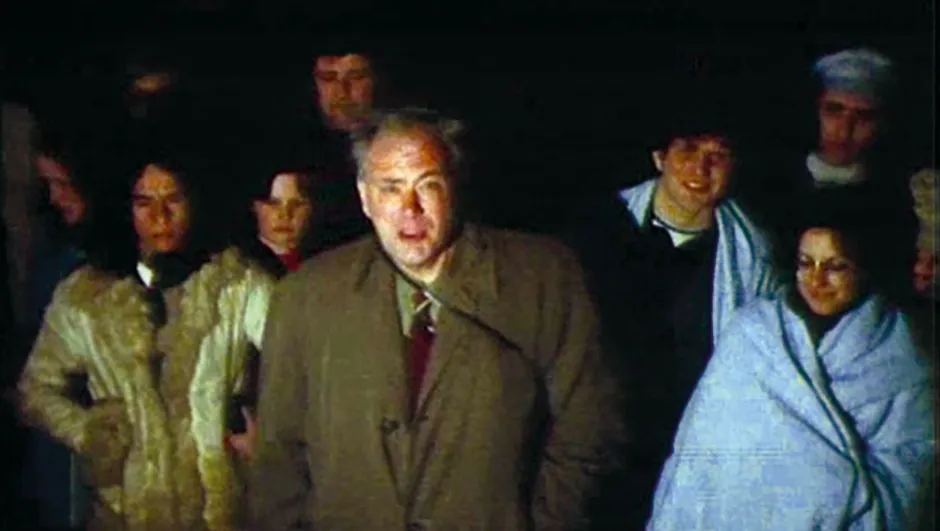If luck favours you and the clouds stay away on a summer solstice, this is the sight that would greet you as the Sun rises over the Heel Stone. Image Credit: Galaxy Picture Library / Alamy Stock Photo
Back on 21 June 1972, The Sky at Night visited the majestic Neolithic monument of Stonehenge to witness the midsummer sunrise, one of the most famous astronomical events in the world.
Sir Patrick Moore’s sceptical reaction to the druidic ceremony that took place around the stones, complete with banners and robes, was recorded for posterity in an episode called ‘Midsummer and Megaliths’.
Sunrise on that day was hidden by cloud – a common occurrence.
But Patrick and his crew had also visited a day earlier, on 20 June, when the horizon was clear at dawn.
Footage they captured shows what happened: the Sun rose directly over the monument’s Heel Stone.
When you stand in the centre of Stonehenge, the Sun aligns with the middle of an arch in the outer circle of sarsen stones and the gap in the tallest of the horseshoe of sarsen trilithons, which has now fallen over.
Stonehenge was constructed on this alignment around 4,500 years ago, yet the reasons why the people of the time went to such lengths of monumental engineering remain unknown.

Return visit
Fast forward 45 years and, on 21 June 2017, BBC Sky at Night Magazine was at Stonehenge for sunrise on the summer solstice.
Some things were the same: as in 1972, clouds hid the moment the Sun first rose above the Heel Stone.
But some things have changed: the number of people who now come to witness the alignment has rocketed – this year it was over 13,000.
Managing such a gathering and the integrity of one of the country’s most enduring treasures is a major logistical undertaking for English Heritage, the custodians of the monument.
We also visited the day before (a day or so either side of solstice really doesn’t make that much difference to the alignment) and, with the stones to ourselves, we were more likely to find the right position to capture the event.
Although the weather on 20 June 2017 was more favourable, we didn’t have Sir Patrick Moore’s luck.
A line of lingering low cloud was too thick for the Sun to shine through in the moments after sunrise.
But seconds later, when the disc of the Sun broke into the clear, the haziness became an advantage.
It gave the Sun a wonderful red colour and dimmed its light to a comfortable level.
The reasons why this ancient wonder was built remain a mystery and perhaps they always will.
No one has yet been able to say for definite whether it’s a temple, a tomb or some sort of calendar.
But its alignment with the annual movement of the Sun shows that the ancient people who made it possessed a keen interest in astronomy the cycles of the night sky.
